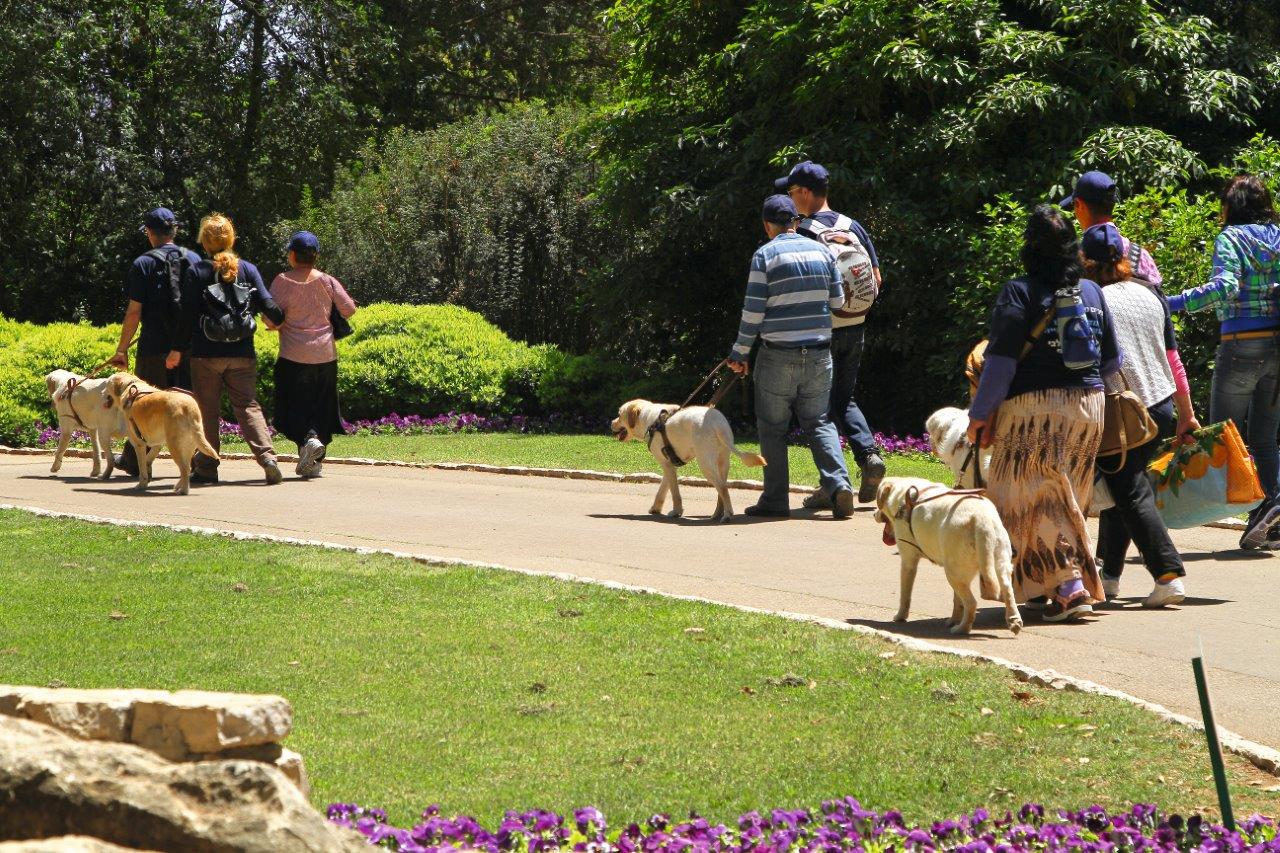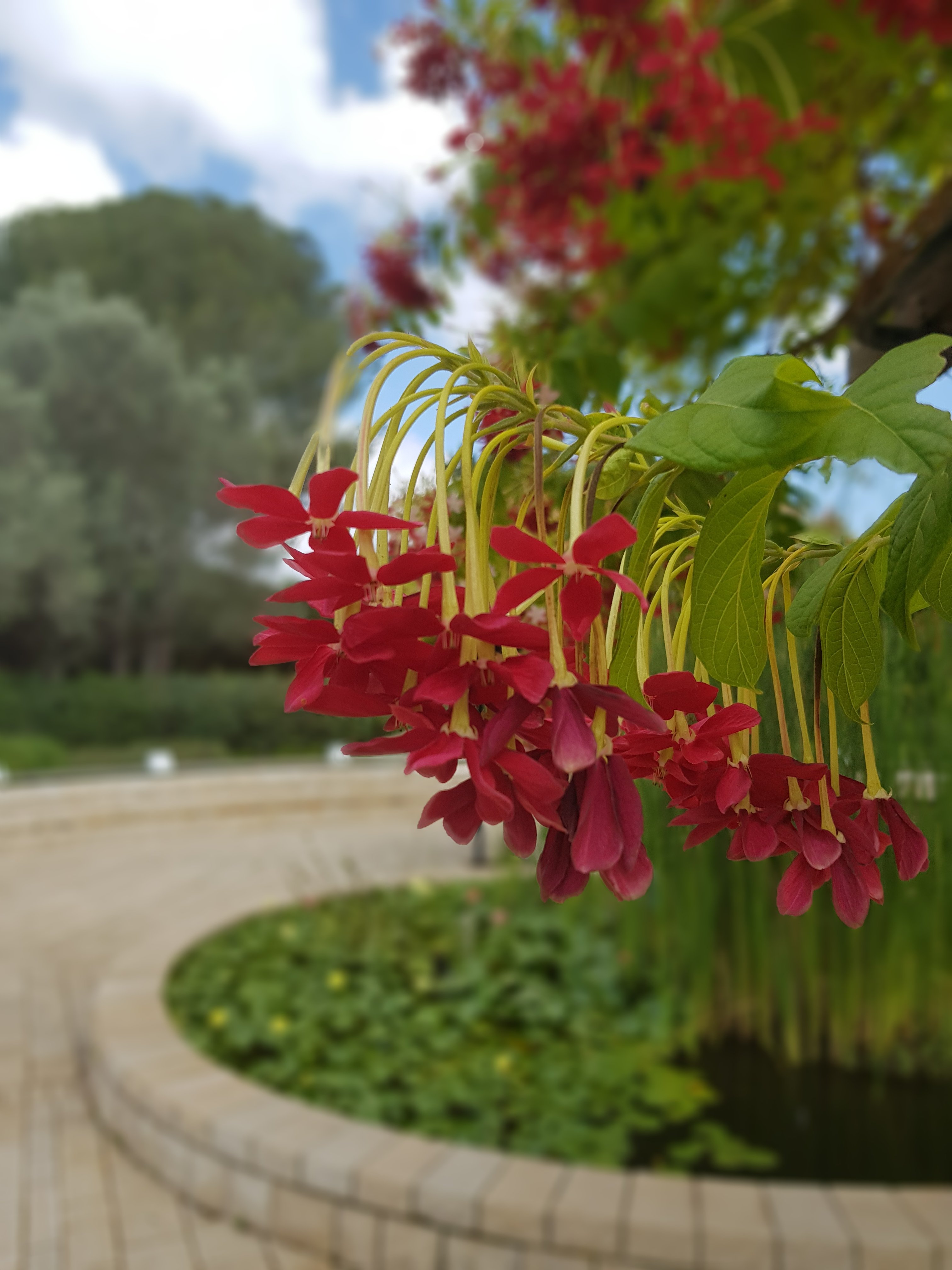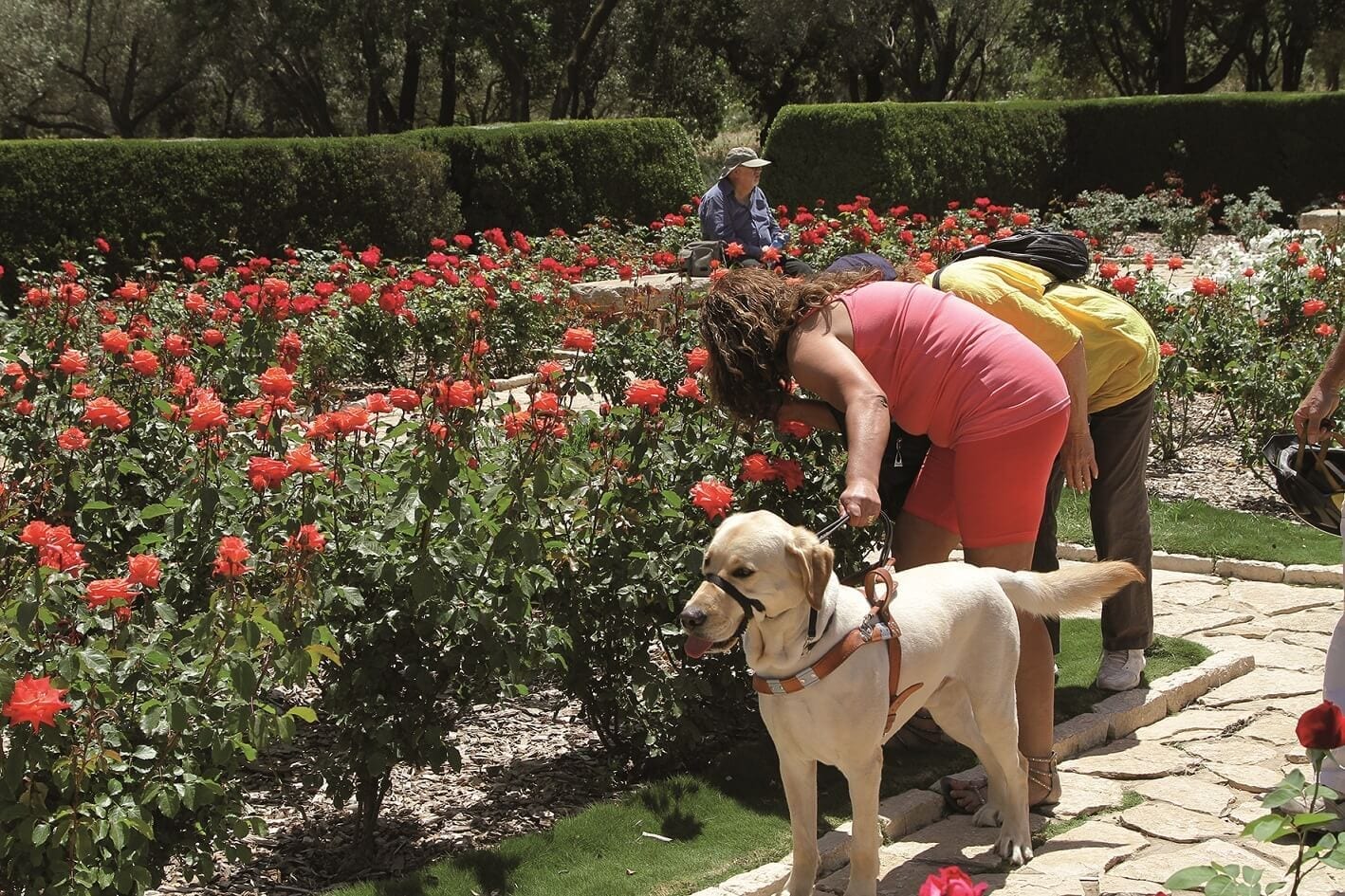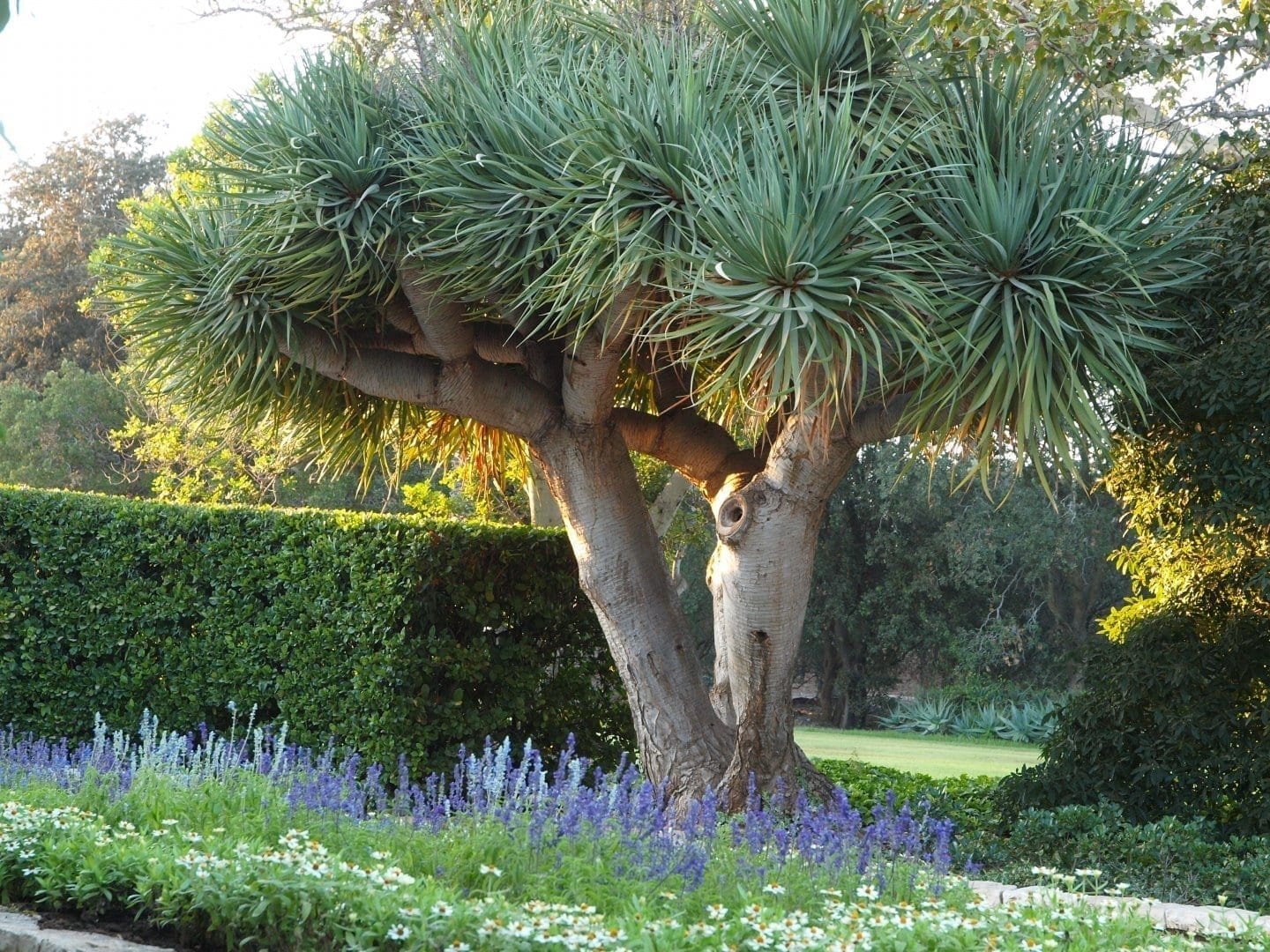Visually Impaired
Many trails traverse the Memorial Gardens. We recommend this route, but you
can choose to walk another route. Braille Booklets may be borrowed from the InfoShop,
by prior arrangement.
 News and Events
News and Events
Many trails traverse the Memorial Gardens. We recommend this route, but you
can choose to walk another route. Braille Booklets may be borrowed from the InfoShop,
by prior arrangement.

At the Entrance
The tour begins at the entrance gate, above which is the Rothschild Family coat of arms, as it appears in the Braille Booklet.
Inside the gate, the paved entrance area is divided into five long sections, separated by strips of grass. Indian beech trees, which reach a height of twelve meters, have been planted in the entrance area. The trees rustle in the pleasant breeze that wafts through the Gardens.
Let’s turn to your right. The path leads to the fragrance garden. Along the way you may feel the deep shade cast by large Fig trees (Ficus oblique), the thick roots of serve as a walking path. These trees have additional roots that hang in the air. You may turn off the path and touch them.
Continue walking until the Fragrance Garden

Fragrance Garden
A change in the type of paving stones used indicates the entrance to this garden, which was designed especially for visually impaired visitors. It is intended to appeal to the senses of smell, touch, and sound, as well as of sight. At the entrance to the garden, is a specially designed relief map that offers an initial orientation. The garden contains raised beds of fragrant and sweet-smelling plants, flowers, and herbs. Start on the path to the right, holding on to the guide rail, which is studded with explanatory labels in Braille, in addition to signs in Latin, Hebrew, and Arabic. In the center of the garden is a round pool and a fountain, surrounded by a wooden pergola with benches, where you may sit in the shade and enjoy the sounds of the fountain. After a short break you are invited to go back to the entrance, turn to your left. Straight ahead on the path, you feel shaded overhead with palm branches. You are in the Palm Garden
Palm Garden
The Palm Garden contains a small sample of the more than 2,800 varieties of palms in the world. Among the types of palm cultivated here are those with tall, straight trunks and tousled boughs; round, crested sprouts that grow close to the ground; and fountain-like splayed foliage. Most familiar of these is the Washingtonia, long known as a trademark of the Baron’s settlements. The main path continues further along the path to the Rose Garden.
Rose Garden
The Rose Garden, is rich in colour and full of blossoms for most of the year. The roses are arranged according to colour: yellow, white, pink, and red, in a wide range of varieties and fragrances. The garden is designed in the French style, characterized by symmetry, fountains, roses paved paths, and even a sundial.

The motif of five is evident in the number of fountains, surmounted by a larger fountain, symbolizing the father of the family, Mayer Amschel Rothschild. Take the narrow path to the right and note the rough stone paving. At the far end of the garden is a semicircular stone pergola rising behind the sculpture of a crouched woman holding a sundial. The woman looks away from the dial, as if divorced from time, hinting that here time stands still. From the stone pergola, turn left back to the main path. At the junction, choose the left turn that will lead you to the Crypt. The other possibility will lead us directly to the Cascade Garden.
The Crypt
The Crypt itself is located, by design, in the centre of the Memorial Gardens. The motif of water, as the source of life, appears here as well. Around the courtyard runs a channel of water filled with lily pads and goldfish. A sculpted stone ‘cup of tears’ is on the wall to the right of the entrance to the Crypt;

the sound of water dripping may be heard at all hours of the day. A large cypress tree, in shape reminiscent of a flame, stands on the other side of the entrance. Five wide steps will take you down into the Crypt itself. The passageway down to the Crypt is relatively low, almost compelling the visitor to bow in respect. The burial tomb, in a niche pointing to Jerusalem, is made of black polished basalt in the form of a seven-sided polygon. It is here that the Baron and Baroness were reinterred twenty years after their deaths. Their names and dates of death are engraved in Hebrew on the tombstone. In front of the tomb is a basalt oil memorial lamp, symbolically held by a pair of hands.
Go out from the same way and turn to the right, towards the Cascade Garden, our last stop.
Please note: The Cascade Garden has seven flights of steps, four steps per flight, with a distance of two meters between each one.
This garden opens up to the Mediterranean Sea below. From here you can feel the cool breeze coming up from the sea high to the mountain and hear the sound of falling water. A stone relief map at the top of the steps indicates the location of forty-four settlements established or supported by the Baron.
Upon leaving the garden Cascade Garden you will walk along the path that will lead to the main entrance area, where your tour began.
Any question? We will be glad to help
Who lived at this spot 70,000 years ago? What major event took place in the gardens in 1954? And what's been going on at Ramat Hanadiv ever since then?
We invite you to find out by getting into a virtual time
Sustainable gardening is defined as gardening that considers the needs of the current generation without harming the needs of future generations. It includes garden design that considers the existing elements on site – the landscape, soil, environment and vegetation suitable for the region
Refresh yourself at the Kiosk with a drink or snack. The kiosk is open daily.